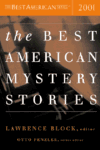|
Excerpt: From the Introduction
Three Strikes is a critical tribute to labor's most recent resurrection. Born in an age when production has become less pivotal to working-class life as capital flees the country in search of cheaper labor, relatively lower taxes, and a deregulated, frequently anti-union environment, the renewed labor movement has taken root in America's latest service-based economy. These "new workers" are concentrated in the healthcare professions, educational institutions, office building maintenance, telemarketing, food processing, food services and various retail establishments, and the prison-industrial complex. Among them we find many more black and brown faces, increasingly more women than men (at least among the rank-and-file), and far too many folks cobbling together incomes from part-time work.
Faced with the challenges of "globalization," an increasingly diverse and mobile working-class, and the shifting gender make up of the nation's workforce, the most progressive labor leaders have extended their work beyond the workplace and beyond the boundaries of the nation-state. They reach out to the very communities where working people live, dream and die, and in the process the union movement has been infused with a fighting spirit that working-class neighborhoods have nurtured for so long. The most visionary labor organizers are attempting to build a movement without borders, recognizing that any significant challenge to global capital depends on international solidarity.
Our tribute, as we have said, is a "critical" one. This book does look backward to look forward; it does attempt to capture the fighting spirit of labor's last century to see if there are any lessons for the struggles yet to come. But we are not interested in merely celebrating labor's heroic traditions of resistance. As each of the following strikes demonstrates, the struggles of American working people were far more complex, far more diverse, and far more interesting than the common lore will have us believe.
There is a shameful failure in the history courses and texts of the American educational system to tell the truth about the labor struggles of the nation's history. The result is to deprive us all of the inspiring stories in which diverse working people fought against great odds -- the combined power of business and government -- to try to bring a measure of dignity to their lives. The first strike in this book, the Colorado Coal Strike of 1913-1914, is one of the most dramatic and violent examples of class conflict in American history. To bring it to public view is to educate us all about an economic system which in its most essential character -- the control of the lives of working people by powerful, invisible forces -- has barely changed.
Today we are overcome with the enormity of corporate power, now operating on a global stage. Yet young people, especially, are looking new ways to challenge it. The story of the 1937 Woolworth's sit-down strike told here resonates with the creative ideas and transnational targets of activists in the streets today. Woolworth's in the 1930s was the equivalent of Wal-Mart, the Gap, and K-Mart; it was also the subject of an enormous social movement against what people called "the chain store evil." But in their strike in March, 1937, 108 very young, white women (most of them were in their teens) suddenly occupied the main Detroit, Michigan Woolworth's to demand a living wage and decent working conditions. Their raucous fun inside the store and the spectacular national solidarity outside is an uplifting tale of young people's visionary energy, and, best of all, young women subverting stereotypes about their relative interests in boys, beautification, and economic betterment.
The third strike story is about worker-artists who rarely thought of themselves as workers; a union waging an impossible war against technological displacement; the trials and tribulations of laboring artists when the work of art, in our case music, is mass produced; the rapid cultural transformation of the urban leisure industry and its impact on both cultural workers and working-class consumers. It is also about the limits of solidarity: what happens when the very technology used to destroy one segment of the work force also generates new desires and pleasures for working people as a whole?
The question is as relevant in 2001 as it was in 1926. The answers will invariably be different, but the great thing about history is that it stimulates our imaginations, renders our contemporary dilemmas more tangible because can discover how real people dealt with similar circumstances. Their successes and failures, victories and missteps give us something to dream about.
Robin D. G. Kelley, Dana Frank, Howard Zinn
January 24, 2001
© 2001 by Howard Zinn, Dana Frank, Robin D. G. Kelley [ck]
All rights reserved
With permission of:
Beacon Press
25 Beacon Street
Boston, Massachusetts 02108-2892
www.beacon.org
|



